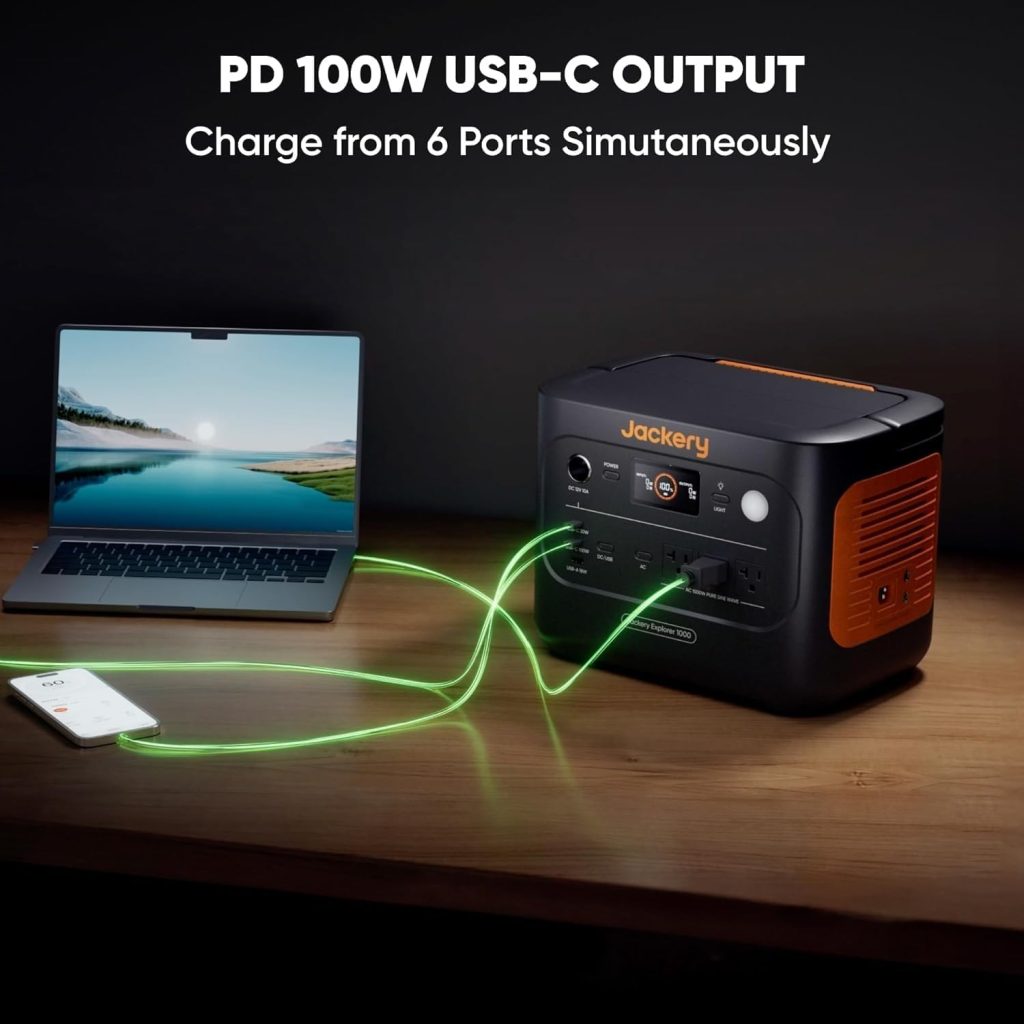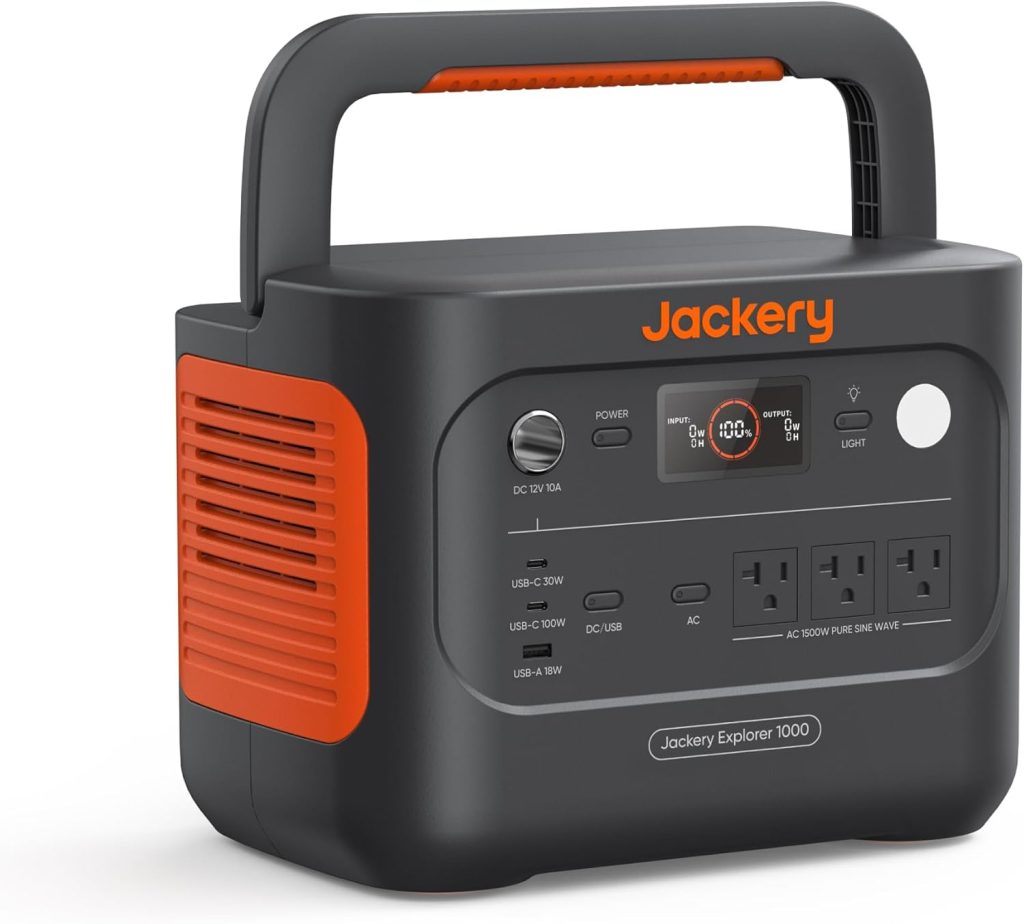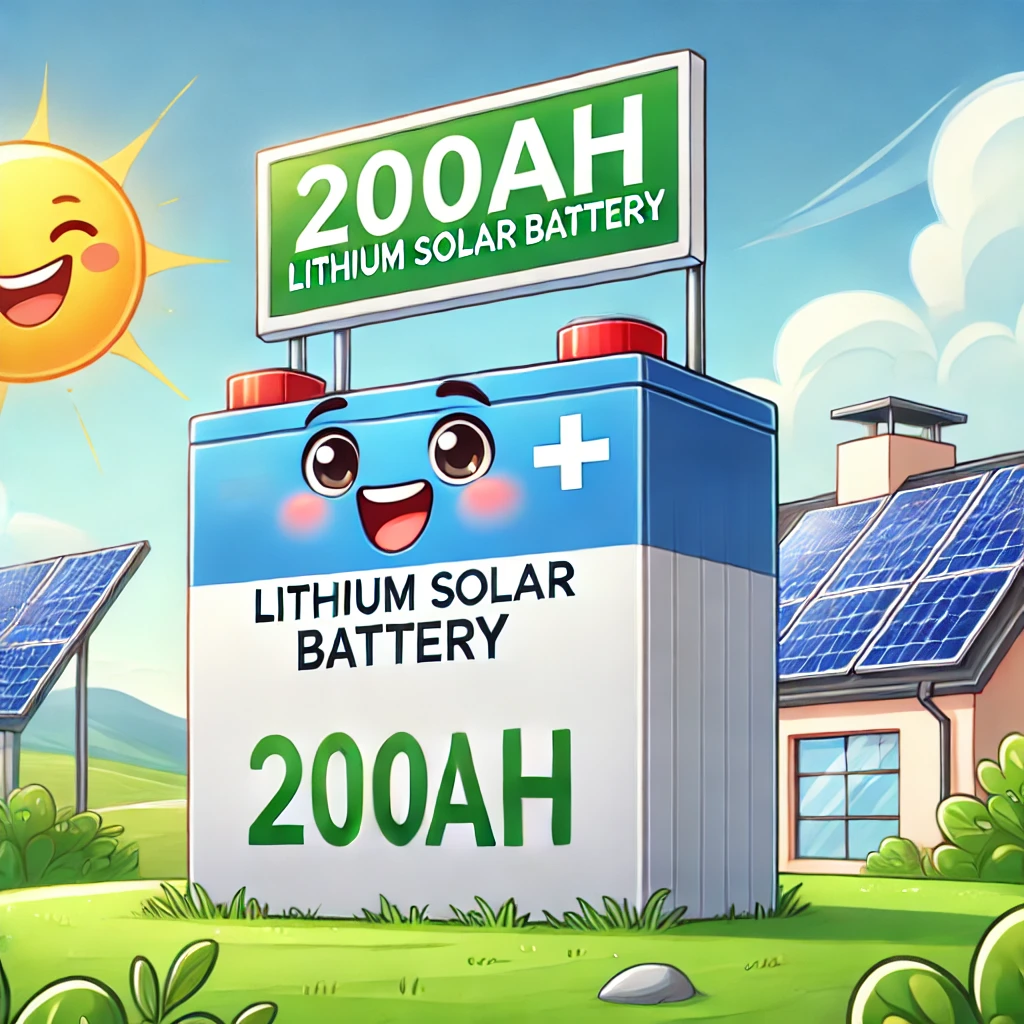So here’s the thing about portable power stations – most of them make you choose. You either get massive capacity with back-breaking weight, or lightweight portability with barely enough juice to charge your phone. The Jackery Explorer 1000 v2 walks into the room and says “why not both?” And honestly? It delivers on that promise in ways that surprised me.
I’ve been testing this unit for the past few months across different scenarios – camping trips, power outages, backyard projects, you name it. Let’s dive into whether this $800-ish investment is worth your hard-earned cash.
What Makes the V2 Different?
First things first – if you’re familiar with the original Explorer 1000, you might be wondering what changed. The answer is: pretty much everything that mattered.
The biggest upgrade? They swapped out the lithium-ion battery for LiFePO4 (Lithium Iron Phosphate). That’s not just fancy marketing speak. This battery chemistry is the difference between a power station that lasts 500 cycles and one that pushes 4,000 cycles. We’re talking about a decade of reliable use versus maybe three years.
Then there’s the charging speed. The v2 can gulp down a full charge in one hour when you enable emergency mode. One hour. From dead to 100%. That’s the kind of speed that actually changes how you use the device. Forgot to charge it before your camping trip? No problem. Plug it in during breakfast, and you’re good to go.

Photo Credit: Amazon
Unpacking and First Impressions
When the delivery truck dropped this off, I was expecting a workout. At 23.8 pounds, it’s no featherweight, but it’s surprisingly manageable. I’ve lugged bags of dog food that felt heavier. The foldable handle is clever – it tucks away flush when not in use, so the unit doesn’t snag on stuff when you’re loading your car.
The build quality immediately stands out. This isn’t some flimsy plastic box that feels like it’ll crack if you look at it wrong. The case is solid, the corners are reinforced, and everything just feels… substantial. Like it was built to actually go places and do things, not just sit pretty on a showroom floor.
The color scheme sticks with Jackery’s signature orange and gray combo. Love it or hate it, at least you’ll never lose this thing in a pile of gear. That orange pops.
Power Output: The Real Story
Let’s talk numbers, but in a way that actually means something to your life.
The Explorer 1000 v2 delivers 1,500 watts continuously, with a 3,000-watt surge capacity for those first few seconds when power-hungry devices wake up. That’s serious juice. We’re not talking about just charging phones anymore.
What can you actually run?
I’ve personally powered a window AC unit for about 4 hours straight on a hot day. Game changer for van life or emergency cooling. A full-size refrigerator? Ran mine for roughly 10-12 hours, which is enough to get through most power outages without losing your groceries.
Electric kettle for morning coffee? Check. Heated blanket for cold nights? Absolutely. Laptop, phone, camera, drone – all simultaneously while still having power to spare. I even ran a small electric chainsaw for yard work when I was too lazy to haul out an extension cord. Worked perfectly.
The pure sine wave output is crucial here. This isn’t that choppy modified sine wave garbage that can damage sensitive electronics or make things hum and buzz. Your laptop, your CPAP machine, your gaming console – they all get clean, wall-outlet-quality power.
That LiFePO4 Battery: Why It Matters
Okay, battery chemistry isn’t the sexiest topic, but stick with me because this is important.
Traditional lithium-ion batteries – like in the original Explorer 1000 – start degrading noticeably after 500-800 charge cycles. That sounds like a lot until you realize it’s maybe 2-3 years of regular use.
LiFePO4 batteries are different animals. The Explorer 1000 v2 is rated for 4,000 cycles while maintaining over 70% capacity. Even if you charge it every single day (which most people won’t), that’s still 10+ years of service. And even then, it doesn’t just die – it still holds 70% of its original capacity.
But there’s more. LiFePO4 is safer. It’s more stable chemically, less prone to thermal runaway (fancy term for catching fire), and handles temperature extremes better. In practical terms? You worry less about leaving it in your car on a hot day or using it in freezing weather.
The battery doesn’t care if you store it fully charged or partially drained. It doesn’t develop memory effects. It just… works. Reliably. For years.
Charging: Multiple Ways, All Fast
Here’s where the v2 really flexes. You’ve got options, and they’re all genuinely useful.
Emergency Mode (1 Hour): This is the headline feature, and it’s not hyperbole. Through the Jackery app, you enable emergency mode, plug into the wall, and watch it charge from 0% to 100% in 60 minutes flat. The first time I did this, I kept checking because it seemed impossible. It’s not. The ChargeShield 2.0 technology manages everything safely, keeping temperatures in check while pushing electrons at breakneck speed.
There’s a catch, though – you have to manually enable emergency mode each time through the app. It’s a deliberate design choice to protect battery longevity, and honestly, it makes sense. Most of the time, you don’t need that speed.
Standard Mode (1.7 Hours): This is the default, and it’s what you’ll use most of the time. Still impressively fast, and it’s optimized for battery health. Plug it in overnight, and wake up to full power without stressing the battery.
Solar Charging: Here’s where things get interesting – and slightly annoying. The v2 is compatible with solar panels, but only Jackery’s own panels. That’s a bummer for folks who already own solar panels from other brands. It’s a closed ecosystem move that feels unnecessarily restrictive.
That said, if you do use Jackery solar panels, the experience is seamless. The built-in MPPT controller optimizes solar input automatically. With a 200W panel, you’re looking at roughly 6-7 hours for a full charge under good sun conditions. Pair two panels together for faster solar charging.
Car Charging: Road tripping? Plug it into your 12V outlet and charge while you drive. It’s slow (think 12-14 hours for a full charge), but hey, you’re driving anyway. I’ve used this as a top-off method between destinations, and it works great for that purpose.

Photo Credit: Amazon
The App: Actually Useful, Not Gimmicky
I’m usually skeptical of apps for physical devices. Too often, they’re solutions looking for problems, adding complexity without real value.
The Jackery app is different. It’s genuinely useful.
What you can do:
- Switch between charging modes (emergency, standard, quiet)
- Monitor real-time input and output
- Check battery health and cycle count
- Enable quiet mode for overnight use (reduces fan noise to 30dB)
- Activate energy efficiency mode to minimize standby drain
- Get firmware updates
The quiet mode deserves special mention. When enabled, the cooling fan runs much softer – about as loud as a whisper. Perfect for camping when you want to hear nature, not electronics, or for overnight use in a bedroom during power outages.
The app connects via Bluetooth, so you don’t need wifi or cellular service. It just works, which is exactly what you want when you’re off-grid.
Port Selection: Plenty for Real Use
The front panel gives you seven output options:
Three AC Outlets: Standard household plugs. The spacing is generous enough that bulky adapters don’t block adjacent outlets – a small detail that shows thoughtful design.
Two USB-C Ports (100W PD): These are fast. Like, properly fast. They’ll charge a MacBook Pro at full speed, no external adapter needed. Most phones and tablets will hit their maximum charging speed through these ports.
One USB-A Port: For older devices that haven’t made the USB-C jump yet. Standard 5V/2.4A output.
One DC Car Port: Powers 12V devices like portable coolers, tire inflators, or car accessories.
The LED light on top is brighter than expected – useful for camping or during power outages. It has multiple brightness levels and a flashing SOS mode for emergencies.
Real-World Testing: Where I Actually Used This Thing
Weekend Camping Trip: Powered a portable fridge, charged phones and cameras, ran LED lights, and even used a small electric griddle for breakfast. Started at 100%, ended the weekend at 23%. Never felt like we were rationing power.
Power Outage (8 Hours): Kept the wifi router running, charged devices, powered a fan, and ran LED lights throughout the house. Still had 40% battery when power returned. The quiet mode meant I could use it in the bedroom without the fan noise driving me crazy.
Backyard Movie Night: Ran a projector and sound system for 4+ hours of outdoor entertainment. The kids watched two movies, and I still had juice left over. No extension cords snaking across the yard.
RV Weekend: This is where the v2 really shined. Powered the AC unit during the hottest part of the day, ran kitchen appliances, kept devices charged, and provided lights at night. Recharged via solar during the day, and we were totally off-grid for three days without stress.
Remote Work Setup: During a home renovation, I set up a temporary office in the garage. The Explorer 1000 v2 powered my laptop, monitor, router, and a small fan for an entire workday. Charged it overnight and repeated for a week.
What It Struggles With
Let’s be honest about limitations, because no device is perfect.
Solar Panel Lock-In: The Jackery-only solar compatibility is frustrating. If you’ve already invested in quality solar panels from another brand, tough luck. You’ll need Jackery panels or you can’t solar charge at all.
Weight: At nearly 24 pounds, this isn’t something you’ll want to hike deep into the backcountry. It’s portable in the “car camping” sense, not the “backpacking” sense.
Price: At around $800-900 depending on sales, this is a significant investment. It’s not cheap, and adding solar panels can push the total cost north of $1,200-1,400.
App Required for Best Features: While the unit works fine without the app, you’re missing out on the best charging modes and monitoring capabilities if you don’t use it. Not a dealbreaker, but worth noting.
Fan Noise: In standard operation under heavy load, the cooling fan is noticeable. It’s not ear-splitting, but it’s there. The quiet mode helps, but you can’t use that while simultaneously running high-wattage devices.
How It Stacks Up Against Competition
The 1000Wh power station market is crowded. Let’s see how the v2 compares:
Versus EcoFlow Delta 2 (1024Wh): The EcoFlow charges slightly faster and has expandable capacity, but the Jackery’s LiFePO4 battery outlasts it by thousands of cycles. Jackery wins on longevity, EcoFlow wins on flexibility.
Versus Bluetti AC200P (2000Wh): The Bluetti has way more capacity but weighs 60+ pounds and costs significantly more. Different class entirely – the Jackery is the portable option, the Bluetti is the “serious basecamp power” option.
Versus Goal Zero Yeti 1000X (983Wh): Similar specs on paper, but the Yeti uses older lithium-ion chemistry with fewer cycles. The Jackery’s LiFePO4 battery and faster charging give it the edge.
Versus Anker 757 (1229Wh): The Anker has slightly more capacity and costs less, but user reports suggest reliability issues and customer service headaches. Jackery’s reputation for durability and support tips the scales.
The Long-Term Value Proposition
At $800-900, you’re probably wondering if this is worth it compared to smaller, cheaper options or bigger, more expensive ones.
Here’s how I think about it: This is a 10-year investment, not a 2-year gadget. Break it down, and you’re paying roughly $80-90 per year for reliable portable power. That’s about $7-8 per month.
For that, you get:
- Emergency backup during outages
- Off-grid capability for camping and travel
- Power for outdoor events and projects
- Peace of mind for unexpected situations
- No generator noise, fumes, or maintenance
Compare that to a gas generator at similar power output. Initial cost might be lower, but add in fuel, maintenance, oil changes, carburetor cleaning, and eventual engine replacement – the power station starts looking economical.
Plus, you can use this indoors safely. No carbon monoxide risk, no ventilation requirements, no noise complaints from neighbors.
Maintenance and Care
The beauty of LiFePO4 batteries is that they’re pretty forgiving. But if you want maximum longevity:
Storage: Keep it at 50-80% charge if you’re not using it for a while. Not critical like with older batteries, but optimal.
Temperature: Avoid extreme cold or heat when possible. The battery can handle it better than lithium-ion, but moderate temperatures are still ideal.
Cleaning: Occasionally blow out the air vents with compressed air. Dust buildup can reduce cooling efficiency.
Firmware: Update through the app when prompted. Jackery regularly releases improvements.
Cycle Management: You don’t need to “condition” the battery or do full discharge cycles. Just use it normally.
That’s it. No oil changes, no spark plug replacements, no carburetor tuning. Charge it and use it.
Who Should Buy the Explorer 1000 v2?
Perfect for:
- RV and van life enthusiasts needing reliable off-grid power
- Homeowners wanting serious emergency backup
- Outdoor workers needing portable power for tools
- Campers who want comfort without sacrificing the outdoor experience
- Content creators filming in remote locations
- Anyone living in areas with unreliable power infrastructure
- People preparing for emergencies without going full prepper
Look elsewhere if:
- You need ultra-lightweight power for backpacking (get a smaller unit)
- You want maximum capacity regardless of weight (look at 2000Wh+ units)
- You’re on a tight budget and rarely lose power or go camping
- You already own non-Jackery solar panels and don’t want to buy new ones
- You need industrial-level power for heavy equipment
The Bottom Line
After months of testing, here’s my honest take: The Jackery Explorer 1000 v2 is the most well-rounded power station I’ve used in this capacity range.
Is it perfect? No. The solar panel exclusivity bugs me, and I wish it were 5 pounds lighter. But those are minor gripes in the face of what it does right.
The LiFePO4 battery means this will outlast most other power stations by years. The one-hour charging is genuinely transformative – it turns this from something you need to plan around into something that’s always ready. The app adds real functionality without needless complexity. And the power output handles actual appliances, not just USB devices.
The build quality inspires confidence. The performance delivers on promises. The features feel thoughtfully implemented rather than checkbox marketing.
For someone who camps regularly, works remotely, or wants serious emergency preparedness, this is money well spent. You’re buying a decade of reliable portable power, and that math works in your favor.
Would I buy it again? Already planning to grab a second one for redundancy. Would I recommend it to friends? Have done so repeatedly, and they’ve all thanked me.
The Explorer 1000 v2 isn’t the cheapest option, and it’s not the most powerful option. But it might just be the smartest option – the one that balances capacity, portability, longevity, and features in a way that actually improves your life rather than just sitting in your garage collecting dust.
My Rating: 4.7 out of 5 stars
The Jackery Explorer 1000 v2 earns its place as one of the best portable power stations on the market. The LiFePO4 battery chemistry ensures longevity that justifies the investment, while the rapid charging and thoughtful features make it genuinely useful rather than occasionally convenient. Minor quibbles about solar compatibility and weight don’t overshadow the overall excellence of this unit. If you’re in the market for a 1000Wh power station, this should be at the top of your list.
Pros:
- Exceptional 4,000-cycle battery life
- Genuinely fast 1-hour charging
- 1,500W output handles real appliances
- Useful app with practical features
- Pure sine wave for sensitive electronics
- Well-designed and durable
- Quiet mode for overnight use
Cons:
- Solar charging limited to Jackery panels only
- Nearly 24 pounds makes it less portable than smaller units
- Premium price point
- App required for best features
- Fan noise under heavy load
For the serious outdoor enthusiast, emergency-preparedness minded individual, or anyone needing reliable off-grid power, the Explorer 1000 v2 delivers value that extends far beyond its price tag. It’s an investment in independence, capability, and peace of mind that pays dividends every time you use it.




